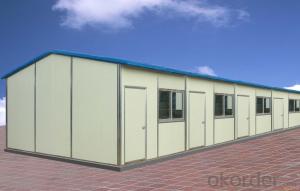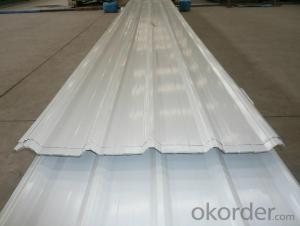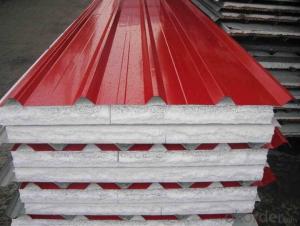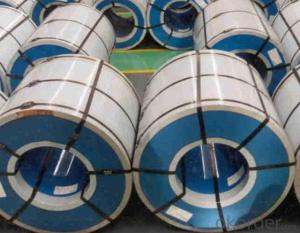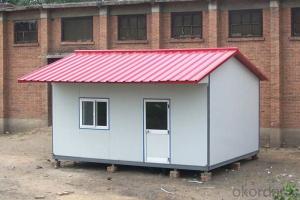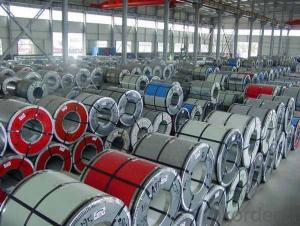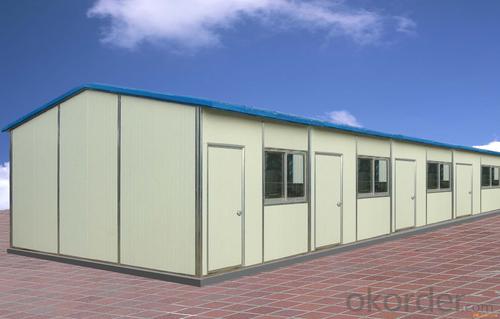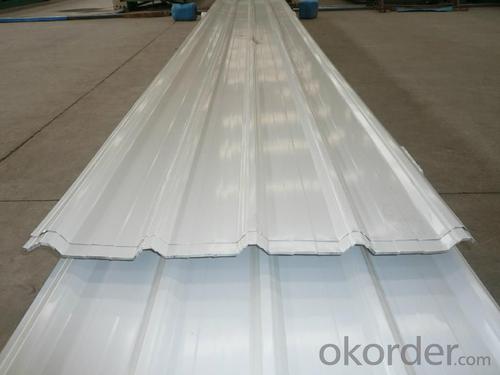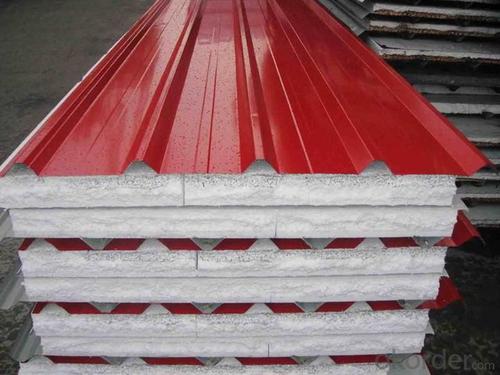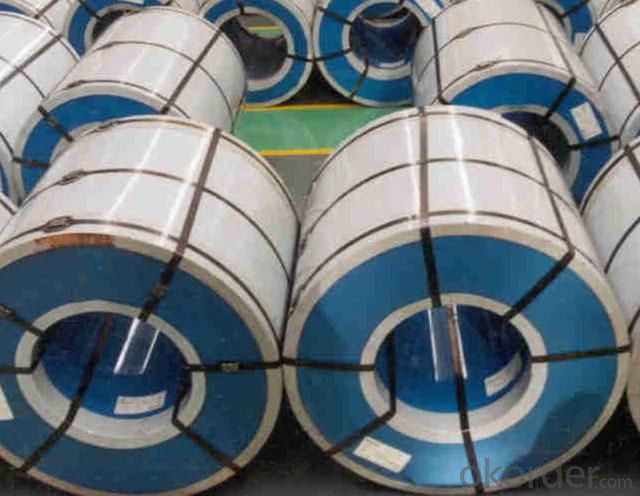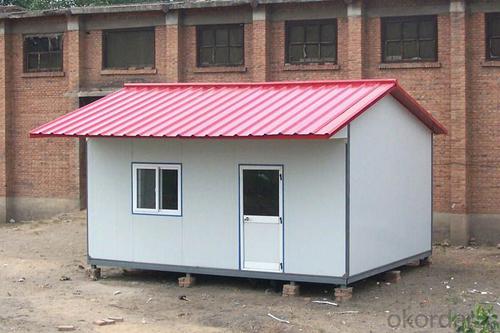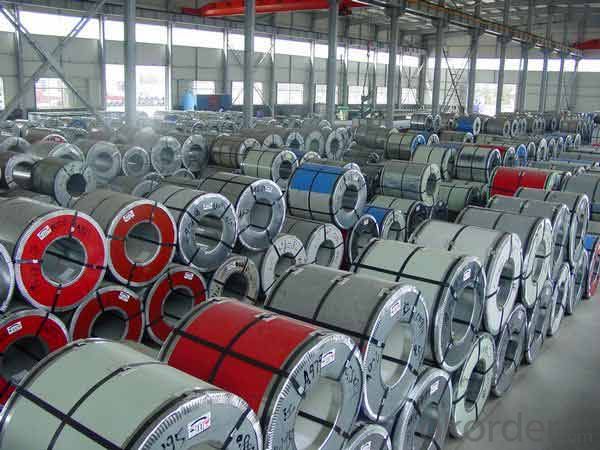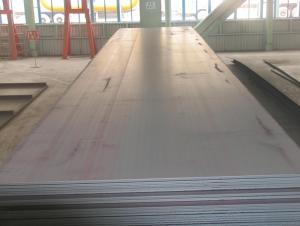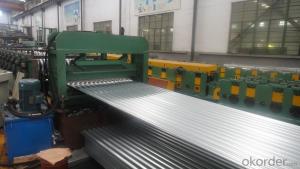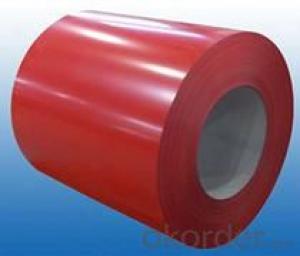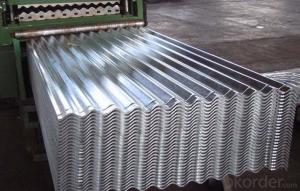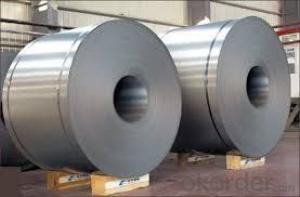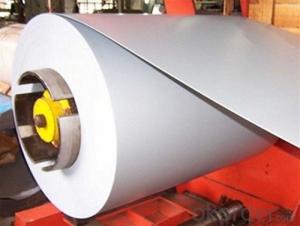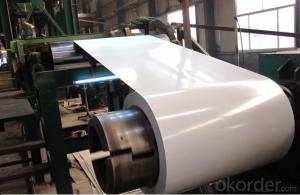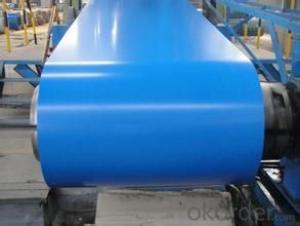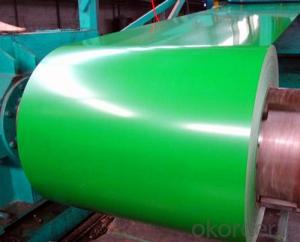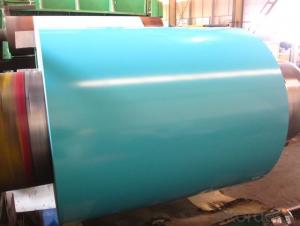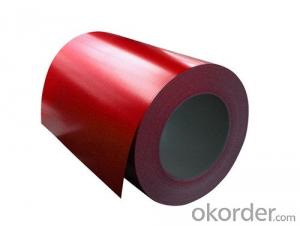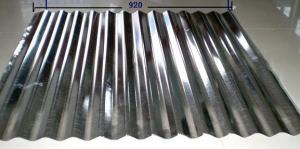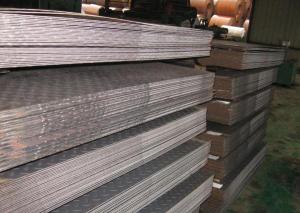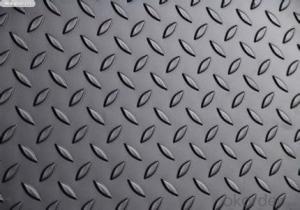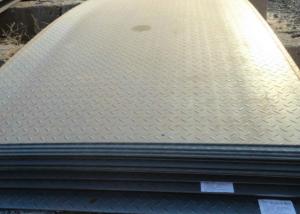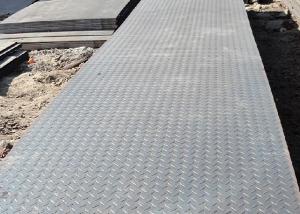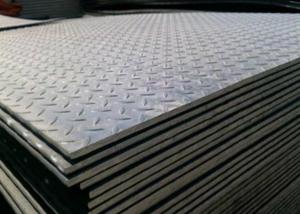gTop Brand Hexing HDGI Prepainted Steel Coil for Greenboard
- Loading Port:
- China main port
- Payment Terms:
- TT OR LC
- Min Order Qty:
- 1 m.t.
- Supply Capability:
- 1 m.t./month
OKorder Service Pledge
OKorder Financial Service
You Might Also Like
Quick Details
| Standard: | AISI,ASTM,DIN,GB,JIS,SGS | Grade: | prepainted steel coil | Thickness: | 0.17-0.5mm |
| Place of Origin: | Anhui China (Mainland) | Brand Name: | CNBM | Model Number: | prepainted steel coil-01 |
| Type: | Steel Coil | Technique: | Hot Rolled | Surface Treatment: | Coated |
| Application: | whiteboard/green board/Projection board | Special Use: | Wear Resistant Steel | Width: | 835-1275mm |
| Length: | As order | Color: | According to RAL Color Systerm or As Per Buyer's Color Sample | Grid line steel: | Produced |
| Cutting line machine: | Yes | Coil weight: | 2-3Ton | OEM: | Yes |
| Flim: | Yes | Apply Kinds: | white board,green board, projection board | Main Color: | White/Green/Black |
| Prepainted steel coil: | Used in Writingboard and Electrical appliance,Hot Dip Prepainted Galvanized Steel Coil |
Packaging & Delivery
| Packaging Detail: | Stardard Seaworthy Package for prepainted steel coil order |
| Delivery Detail: | 15Days after receive payment for prepainted steel coil order |
Specifications
1. Thickness:0.17~0.5mm
2. Width:835~1275mm
3. Top:10~25mu,Bottom:5~7mu
4. Zinc:80~275g
5. Prepainted steel coil
Hexing Prepainted Steel Coil
OUR SPECIFICATION
Manufacturer | Thickness | Width | Inner diameter of coil |
cnbm | 0.17-0.5mm | 835-1275mm | 508mmm |
Certificate | ISO9001 ISO14001 BV | ||
Technique | Hot zinc-coated steel sheet/coil | ||
Coated Mass
Base plate | Available Coated Mass(g/m^2) |
Galvanized Steel | 60,80, 100, 120, 160, 180mm |
Available Painting
Category of painting | Item | Code |
Polyester | PE | |
High-durability polyester | HDP | |
Silicon modified polyesters | SMP | |
Polyvinylidene fluoride | PVDF | |
| Acrylic acid | HPAA |
APPLICATION OF OUR PREPAINTED STEEL
Writing board | Blackboard, White board,Chalkboard, Hidden cell blackboard,Marker Board, Projection board. |
Our Production Line
Our production line is automatic controled by computer to finish products production, by controled the steel speed, temperature,Tension and a series of data to make the production exactly and going well. We also have professional team to maintain our production line regularly. Professional production line and more than 10years in this field, we are more professional!
- Q: What are the different methods of surface cleaning for steel sheets?
- There are several methods of surface cleaning for steel sheets, including mechanical cleaning techniques such as abrasive blasting or grinding, chemical cleaning using solvents or acids, and electrochemical cleaning methods like electrolysis or pickling. Each method is chosen based on the specific requirements and condition of the steel surface to effectively remove dirt, rust, scale, or other contaminants.
- Q: Can steel sheets be used for security doors and windows?
- Yes, steel sheets can be used for security doors and windows. Steel is a strong and durable material that provides enhanced security and protection against forced entry and break-ins.
- Q: What is the difference between a smooth and patterned steel sheet?
- A smooth steel sheet typically has a plain, uniform surface without any visible patterns or textures. It has a consistent and sleek appearance, making it suitable for applications where a clean, modern look is desired. On the other hand, a patterned steel sheet features various designs or textures that are embossed or etched onto the surface. These patterns can range from simple geometric shapes to intricate motifs. Patterned steel sheets are often chosen for their decorative appeal and ability to add visual interest to a space. They can be used in architectural elements, such as wall panels or ceiling tiles, to create a unique and artistic effect. In terms of functionality, smooth steel sheets may offer slightly better corrosion resistance due to their smoother surface, making them suitable for applications where protection against rust is important, such as in outdoor or marine environments. Conversely, patterned steel sheets may have reduced corrosion resistance due to the variation in surface texture, potentially offering less protection against rust. Overall, the choice between a smooth and patterned steel sheet depends on the desired aesthetic, functional requirements, and the intended application.
- Q: How do steel sheets handle bending or flexing?
- Steel sheets are highly malleable and can handle bending or flexing quite well. Due to their inherent strength and ductility, steel sheets can be easily bent or flexed without breaking or cracking, making them ideal for various applications in construction, manufacturing, and engineering industries.
- Q: How do steel sheets perform in terms of earthquake resistance?
- Steel sheets are highly effective in terms of earthquake resistance due to their high strength and ductility. They are capable of absorbing and dissipating seismic forces, providing structural stability and reducing the risk of collapse during an earthquake. Additionally, steel sheets can be easily reinforced and retrofitted to enhance their earthquake resistance, making them a preferred choice in seismic-prone areas.
- Q: Can steel sheets be used in the food processing industry?
- Yes, steel sheets can be used in the food processing industry. Steel is a popular choice for food processing equipment and materials due to its strength, durability, and corrosion resistance. It is commonly used in the construction of food storage tanks, conveyor belts, cutting surfaces, and other machinery. Additionally, steel sheets can be easily cleaned and sanitized, making them suitable for maintaining high hygiene standards in food processing facilities.
- Q: Are the steel sheets resistant to atmospheric corrosion?
- Generally, steel sheets possess resistance against atmospheric corrosion. However, the degree of resistance may differ depending on the specific steel type employed and the environmental conditions it encounters. For example, stainless steel sheets exhibit high resistance owing to the inclusion of chromium, which generates a safeguarding oxide layer on the surface. Conversely, carbon steel sheets might be more vulnerable to corrosion if they lack proper coating or treatment. Moreover, the presence of pollutants, humidity, and other atmospheric aspects can also impact the corrosion resistance of steel sheets. It is, therefore, crucial to take into account these factors and select the suitable steel type and protective measures to ensure enduring resistance against atmospheric corrosion.
- Q: What is the difference between stainless steel and regular steel sheets?
- Stainless steel and regular steel sheets differ primarily in their composition and properties. Stainless steel is an alloy made from a combination of iron, chromium, and other elements such as nickel and molybdenum. Regular steel, on the other hand, is primarily composed of iron with small amounts of carbon and other impurities. The key difference between stainless steel and regular steel sheets lies in their corrosion resistance. Stainless steel is highly resistant to corrosion due to the presence of chromium, which forms a protective layer on its surface when exposed to oxygen. This layer, known as a passive film, prevents the steel from rusting and makes it suitable for applications in environments with high moisture or chemical exposure. Regular steel sheets, on the other hand, are prone to corrosion as they lack the protective chromium layer. They may require additional coatings or treatments to enhance their corrosion resistance. Without proper protection, regular steel sheets can rust and deteriorate over time when exposed to moisture or corrosive substances. Another difference between stainless steel and regular steel sheets is their strength and hardness. Stainless steel is generally stronger and more durable than regular steel due to its alloy composition. It can withstand higher temperatures and has better resistance to wear and tear. Regular steel, although strong, may not offer the same level of strength and durability as stainless steel. The aesthetic appeal is another contrasting factor between the two. Stainless steel sheets have a shiny, reflective surface that gives them a modern and sleek appearance. They are often used in architectural and decorative applications where visual appeal is desired. Regular steel sheets, on the other hand, have a more dull and matte finish and are primarily used for structural and industrial purposes rather than for their visual appeal. In summary, stainless steel sheets offer superior corrosion resistance, strength, and aesthetic appeal compared to regular steel sheets. They are a preferred choice for applications where durability, hygiene, and maintenance-free performance are required, such as in kitchens, medical equipment, automotive parts, and construction projects. Regular steel sheets, while less expensive, may require additional protection and are commonly used in structural and industrial applications where corrosion resistance and visual appeal are not primary concerns.
- Q: What are the different coating options available for steel sheets?
- There are several coating options available for steel sheets, each offering unique benefits and protection against various environmental factors. Some of the most common coating options include: 1. Galvanized Coating: This is the most widely used coating for steel sheets. It involves applying a layer of zinc to the surface, which acts as a sacrificial anode and prevents corrosion. Galvanized coating provides excellent corrosion resistance and is suitable for both indoor and outdoor applications. 2. Galvannealed Coating: This coating is similar to galvanized coating but is further heat-treated to form a zinc-iron alloy layer on the surface. Galvannealed coating offers improved paint adhesion and weldability, making it suitable for applications that require painting or additional fabrication processes. 3. Electroplated Coating: This process involves immersing the steel sheet in a solution containing metal ions and applying an electric current to deposit a thin layer of metal onto the surface. Common electroplated coatings include zinc, nickel, and chromium. Electroplated coatings provide enhanced corrosion resistance and can also improve aesthetics. 4. Organic Coating: Also known as painted or coated steel sheets, this option involves applying a layer of organic material such as paint, powder coating, or plastic film to the steel surface. Organic coatings provide protection against corrosion, UV radiation, and abrasion. They also offer a wide range of colors and finishes, making them suitable for architectural and decorative applications. 5. Tin Coating: Tin-plated steel sheets have a thin layer of tin applied to the surface through an electroplating process. Tin coating provides excellent solderability, corrosion resistance, and food-grade suitability. It is commonly used in the production of food cans and other packaging materials. 6. Aluminized Coating: This coating involves applying a layer of aluminum to the steel surface through a hot-dipping process. Aluminized coating provides excellent heat reflectivity, corrosion resistance, and thermal conductivity. It is often used in applications that require heat resistance, such as exhaust systems and heat exchangers. These are just a few of the many coating options available for steel sheets. The choice of coating depends on factors such as the intended use, environmental conditions, and desired properties of the steel sheet. It is essential to consider these factors and consult with coating experts to determine the most suitable option for specific applications.
- Q: What is the process of annealing steel sheets?
- Annealing steel sheets is a heat treatment process that involves heating the sheets to a specific temperature, typically above its recrystallization temperature, and then slowly cooling it down. This process helps to relieve internal stresses, soften the steel, and improve its ductility and machinability. The slow cooling allows the formation of larger grains, resulting in a more uniform and malleable material.
Send your message to us
gTop Brand Hexing HDGI Prepainted Steel Coil for Greenboard
- Loading Port:
- China main port
- Payment Terms:
- TT OR LC
- Min Order Qty:
- 1 m.t.
- Supply Capability:
- 1 m.t./month
OKorder Service Pledge
OKorder Financial Service
Similar products
Hot products
Hot Searches
Related keywords
